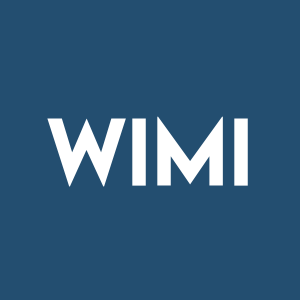WiMi Developed PBO-Based Dynamic Optimization Algorithm That Can Be Applied to Blockchain and Bitcoin Trading Strategies
Beijing, Jan. 08, 2024 (GLOBE NEWSWIRE) -- WiMi Hologram Cloud Inc. (NASDAQ: WIMI) ("WiMi" or the "Company"), a leading global Hologram Augmented Reality ("AR") Technology provider, today announced that the probability of backtest overfitting algorithm (PBO) was used to blockchain and bitcoin trading strategies. PBO is computed based on the combinatorial symmetric cross-validation framework (CSCV) and is designed to quantify the risk of overfitting in small sample backtests. With PBO, it is possible to assess the overfitting probability of a strategy in a single backtest, thus reducing the risk of a poorly performing live model. However, relying on backtesting results alone is not enough. In order to obtain models that perform better out-of-sample, WiMi has developed a dynamic optimization algorithm based on PBO, namely the "PBO-DOA algorithm". This algorithm is important in quantitative trading because it can dynamically optimize the model's parameters to help investors build optimal portfolios.
PBO-DOA could be applied in blockchain and bitcoin trading strategies. By optimizing the weight allocation of a portfolio, the algorithm is able to maximize returns and control risk. This provides an effective tool for investors to better manage their portfolios and thus realize better investment returns. Suppose there is a portfolio that contains multiple blockchain and bitcoin-related assets such as bitcoin, ethereum, litecoin, etc. At this point, using PBO-DOA it is possible to optimize the return of the portfolio by adjusting the weights of each asset:
First, WiMi collects historical market data for each asset, including key information such as price and trading volume. Subsequently, by employing PBO-DOA, the expected return and risk of each asset are precisely calculated. The core idea of the algorithm is to fully consider the correlation and covariance matrices between assets in order to develop a reasonable asset weight allocation. It aims to find an optimal portfolio that maximizes expected return and minimizes risk. Here is an example, there are three assets: bitcoin, ethereum, and Litecoin. Using PBO-DOA, the expected return and risk of each asset can be accurately calculated and the optimal asset weight allocation can be further found. Based on the calculation results of the algorithm, the optimal weight allocation scheme can be analyzed as
The PBO-DOA is based on in-depth analysis of large amounts of transaction data and model training, which can provide more accurate predictions and decision support. By studying historical Bitcoin price and transaction data, the algorithm is able to successfully identify market trends and cycles, thus helping traders develop more effective trading strategies. In addition, through in-depth mining and analysis of blockchain data, PBO-DOA reveals hidden trading laws and patterns.
Blockchain, as an open and transparent transaction record database, provides rich data resources, and it is based on these data that PBO-DOA uncovers traders' behavioral patterns and potential market opportunities. By monitoring the data and analyzing it in real-time, the algorithm helps traders adjust their strategies in time to adapt to the dynamic changes in the market. Given the volatility of the Bitcoin market, real-time data monitoring and analysis is particularly important, and PBO-DOA's powerful real-time data analytics help traders quickly capture market dynamics and make decisions accordingly.
WiMi's PBO-DOA allows for more scientific optimization of blockchain and bitcoin trading strategies, thereby increasing portfolio returns and controlling risk. Algorithms in blockchain and bitcoin trading strategies are over-optimizing the weight allocation of portfolios, maximizing returns, and controlling risks. By considering the correlation and covariance matrices between assets, it helps investors find an optimal weight allocation scheme to construct an optimal portfolio.
About WIMI Hologram Cloud
WIMI Hologram Cloud, Inc. (NASDAQ:WIMI) is a holographic cloud comprehensive technical solution provider that focuses on professional areas including holographic AR automotive HUD software, 3D holographic pulse LiDAR, head-mounted light field holographic equipment, holographic semiconductor, holographic cloud software, holographic car navigation and others. Its services and holographic AR technologies include holographic AR automotive application, 3D holographic pulse LiDAR technology, holographic vision semiconductor technology, holographic software development, holographic AR advertising technology, holographic AR entertainment technology, holographic ARSDK payment, interactive holographic communication and other holographic AR technologies.
Safe Harbor Statements
This press release contains "forward-looking statements" within the Private Securities Litigation Reform Act of 1995. These forward-looking statements can be identified by terminology such as "will," "expects," "anticipates," "future," "intends," "plans," "believes," "estimates," and similar statements. Statements that are not historical facts, including statements about the Company's beliefs and expectations, are forward-looking statements. Among other things, the business outlook and quotations from management in this press release and the Company's strategic and operational plans contain forward−looking statements. The Company may also make written or oral forward−looking statements in its periodic reports to the US Securities and Exchange Commission ("SEC") on Forms 20−F and 6−K, in its annual report to shareholders, in press releases, and other written materials, and in oral statements made by its officers, directors or employees to third parties. Forward-looking statements involve inherent risks and uncertainties. Several factors could cause actual results to differ materially from those contained in any forward−looking statement, including but not limited to the following: the Company's goals and strategies; the Company's future business development, financial condition, and results of operations; the expected growth of the AR holographic industry; and the Company's expectations regarding demand for and market acceptance of its products and services.
Further information regarding these and other risks is included in the Company's annual report on Form 20-F and the current report on Form 6-K and other documents filed with the SEC. All information provided in this press release is as of the date of this press release. The Company does not undertake any obligation to update any forward-looking statement except as required under applicable laws.
Contacts
WIMI Hologram Cloud Inc.
Email: pr@wimiar.com
TEL: 010-53384913
ICR, LLC
Robin Yang
Tel: +1 (646) 975-9495
Email: wimi@icrinc.com









